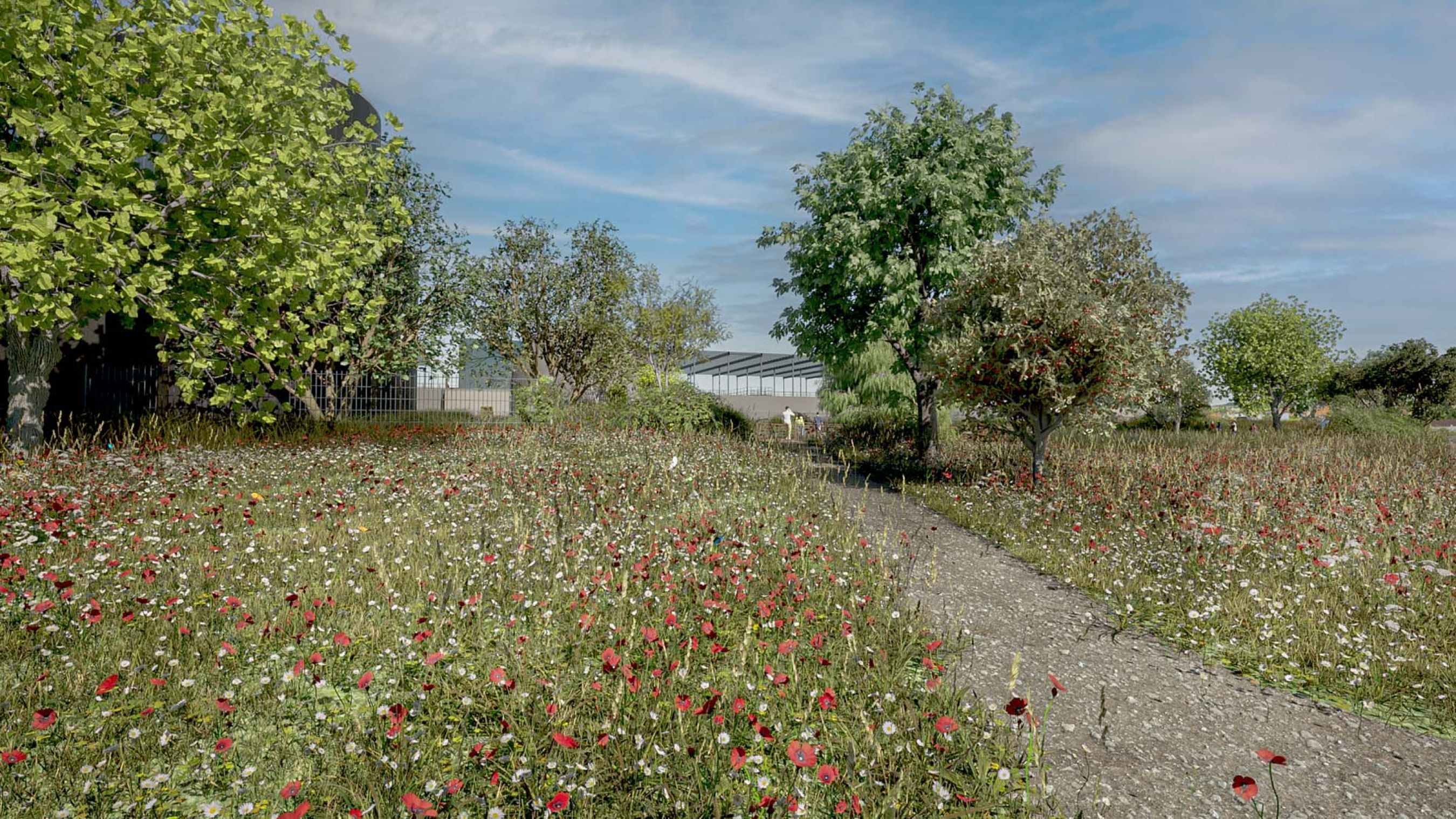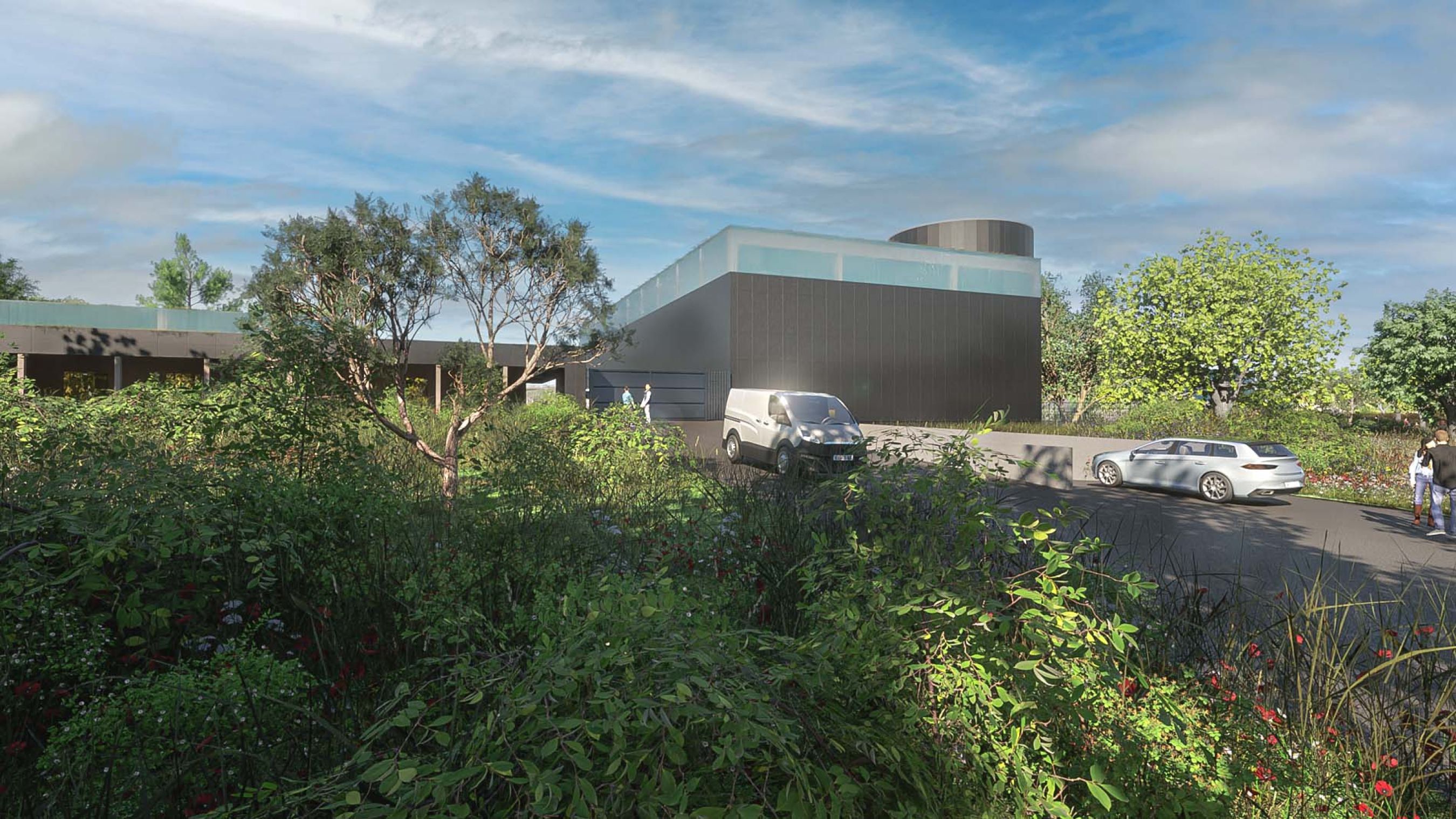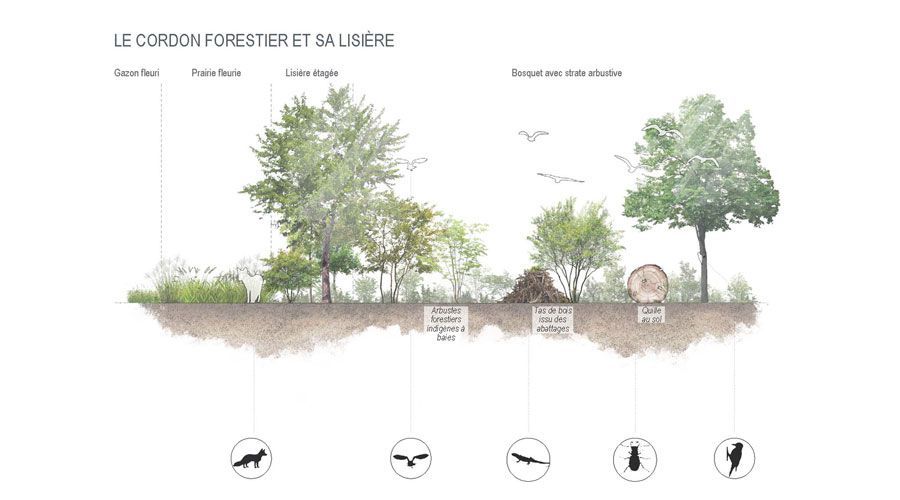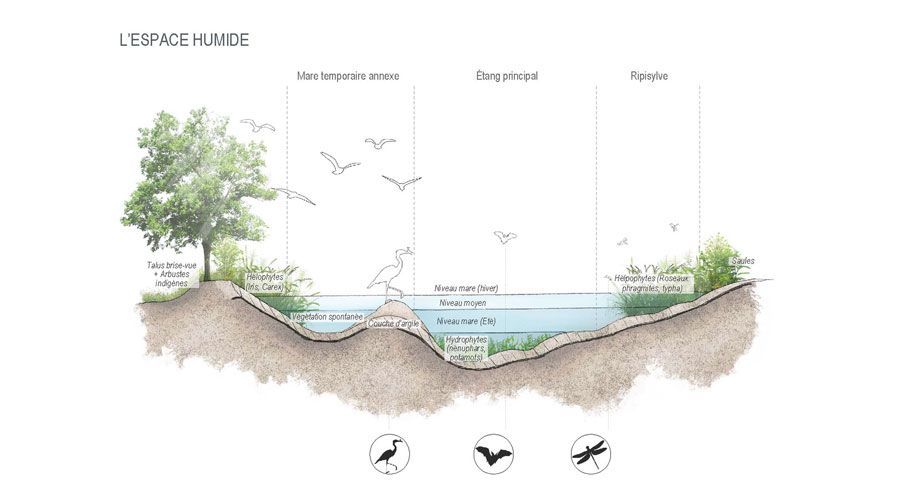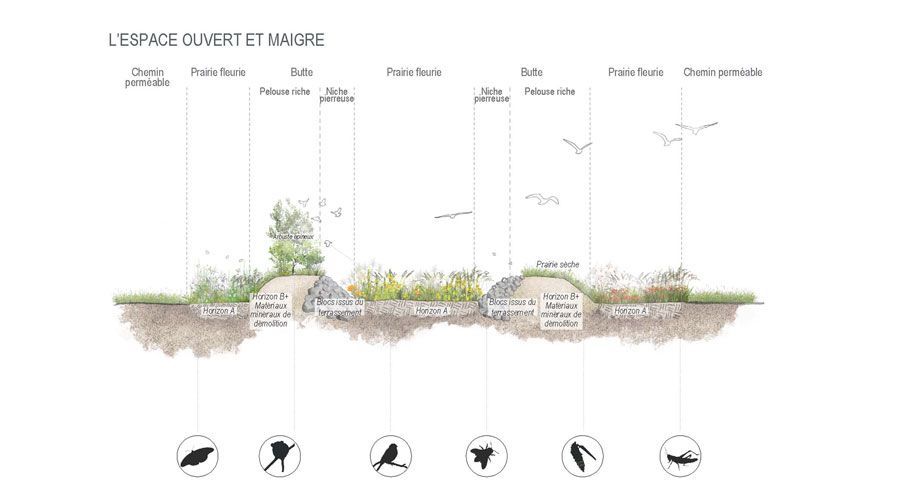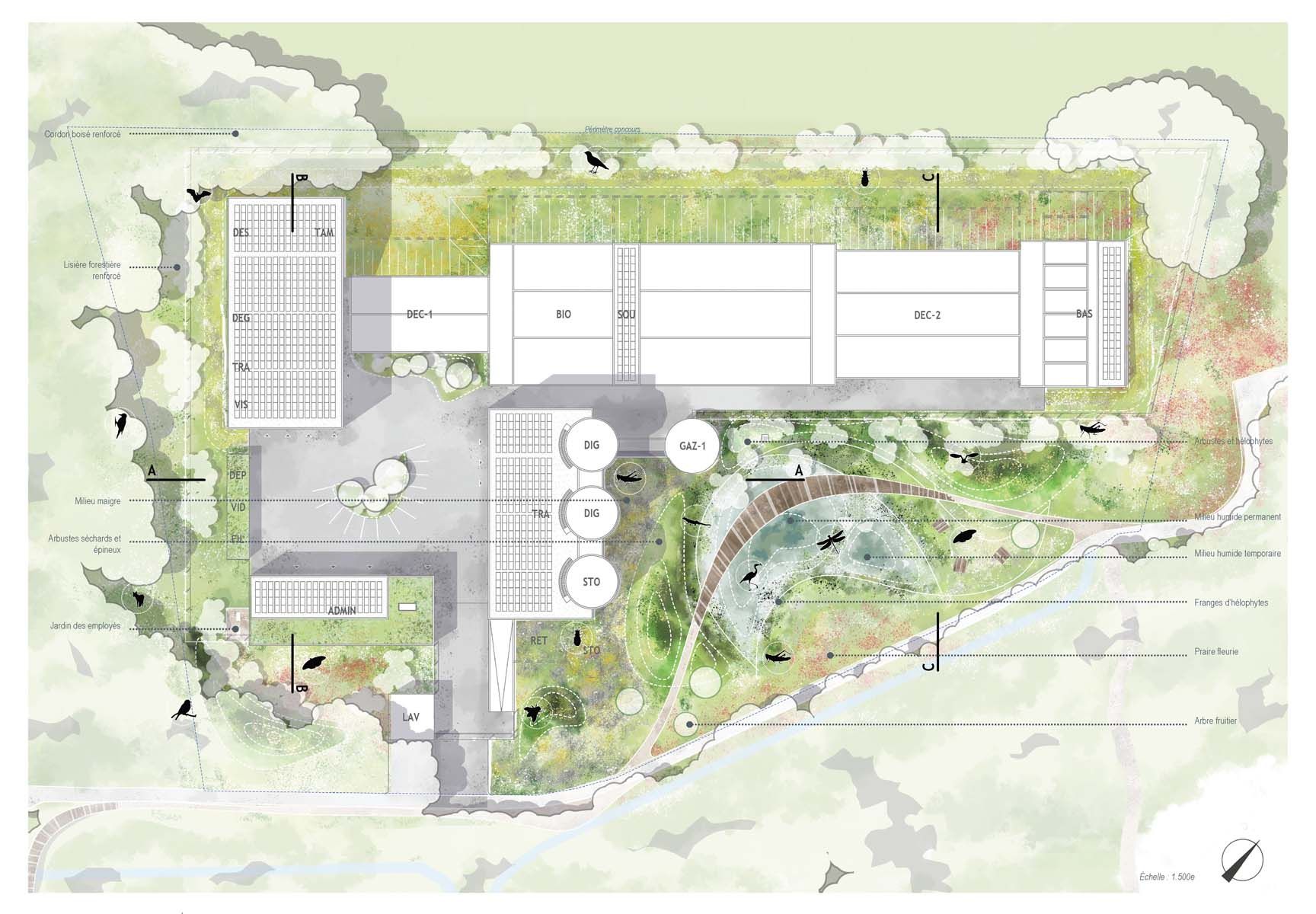The outdoor facilities of the Gland WWTP: integration through the landscape
Project name: 'Limpid' STEP of Gland
Location town / canton: Gland, canton of Vaud
Type of project: Public space
Project start date: September 2021
Delivery date: 2027
Area of the AMEX project:
AIS Stages: 21 - 53
Lead architect: A. Cornaz Architectes
Partner company: Holinger SA.
This APEC project is located in Gland in the canton of Vaud. Located on the hillsides of the Jura, the site is a former agricultural land surrounded by fields and bordered by wooded cordons. The will of the client is to propose a device with reduced visual impact in order to preserve the existing natural environment.
On this mandate, our mission as a landscape architect is to carry out the outdoor facilities and plantations in such a way as to integrate the STEP into an agricultural and forest landscape. The use of BIM allows us to work in close collaboration with the various actors of the project by coordinating the digital models.
The landscape integration of a WWTP thanks to natural spaces
The architectural project reduces the footprint by grouping the buildings around a central mineral courtyard. The optimization of the built-up surfaces of the WWTP frees up large green expanses to accommodate different functions, for users and for the development of natural ecosystems.
The forest edge on the outskirts is densified at various strategic points in order to limit the visual impact from the neighboring villages and to reinforce the fauna and flora biodiversity.
The excavated earth is reused to play on the topography by creating mounds to the south and a large embankment to the north which have the double function of masking views and diversifying environments.
Throughout the project, the species are 100% indigenous and selected in consultation with an environmental engineer. Various environments are valued throughout the plot: meager meadows, pond, ruderal surfaces, halophyte fringes, valleys, forest edge, green roofs.
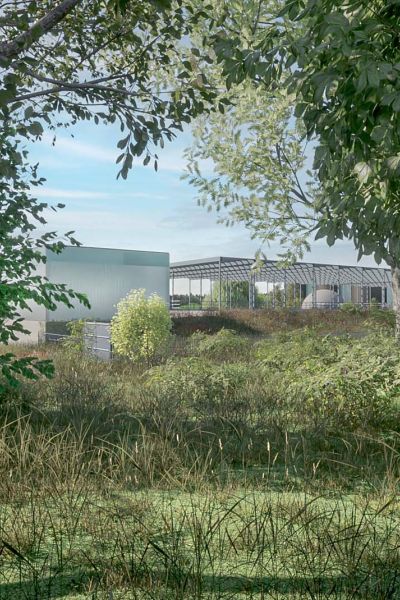
Give space to the user and to nature
The particularity of the project (and probably what made the difference during the competition) is to take the problem upside down. The idea is not to build a WWTP integrating natural spaces, but to propose public natural spaces integrating a wastewater treatment plant. By multiplying the biotopes, we reinforce the existing natural ecosystem while offering walkers public facilities articulated around nature.
The challenge here is to give space to use, to the user and to nature. This is why the central part of the device is not the building, but the wetland and its pond.
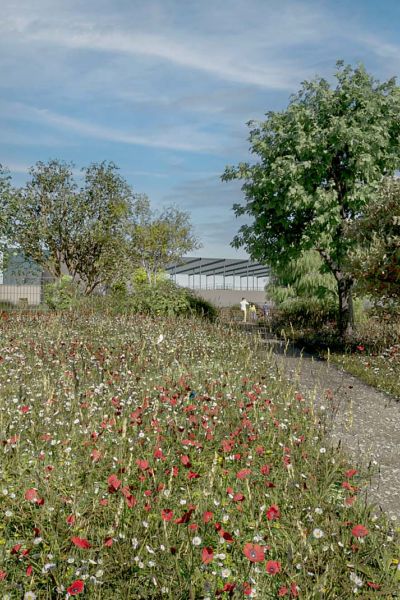
The central water feature
The uses dedicated to the outdoor public are grouped around a central wetland. The pond is not a simple static retention basin, but a fluctuating piece of water to enhance the water cycle. A wooden walkway and plots offer an educational trail with information on the diversity of the surrounding environments. The playful nature of the signage invites walkers to stop for a moment to observe nature.
Bringing together public uses and landscape themes, the didactic walk through the wetland combines both aesthetic and environmental appeal, allowing the WWTP to be naturally integrated into the larger landscape.

Didactic natural spaces to bring a new perspective on the STEP
The construction of a wastewater treatment plant is always a complex project, with many reluctant municipalities. The real difference here is to keep the current uses of the plot and even to increase them. The walkers of before benefit today from diversified natural spaces and from an educational course sensitizing with the mediums in presence. The strong concept behind this project is a paradigm shift thanks to the landscape: transforming a wastewater treatment plant into a public park.

